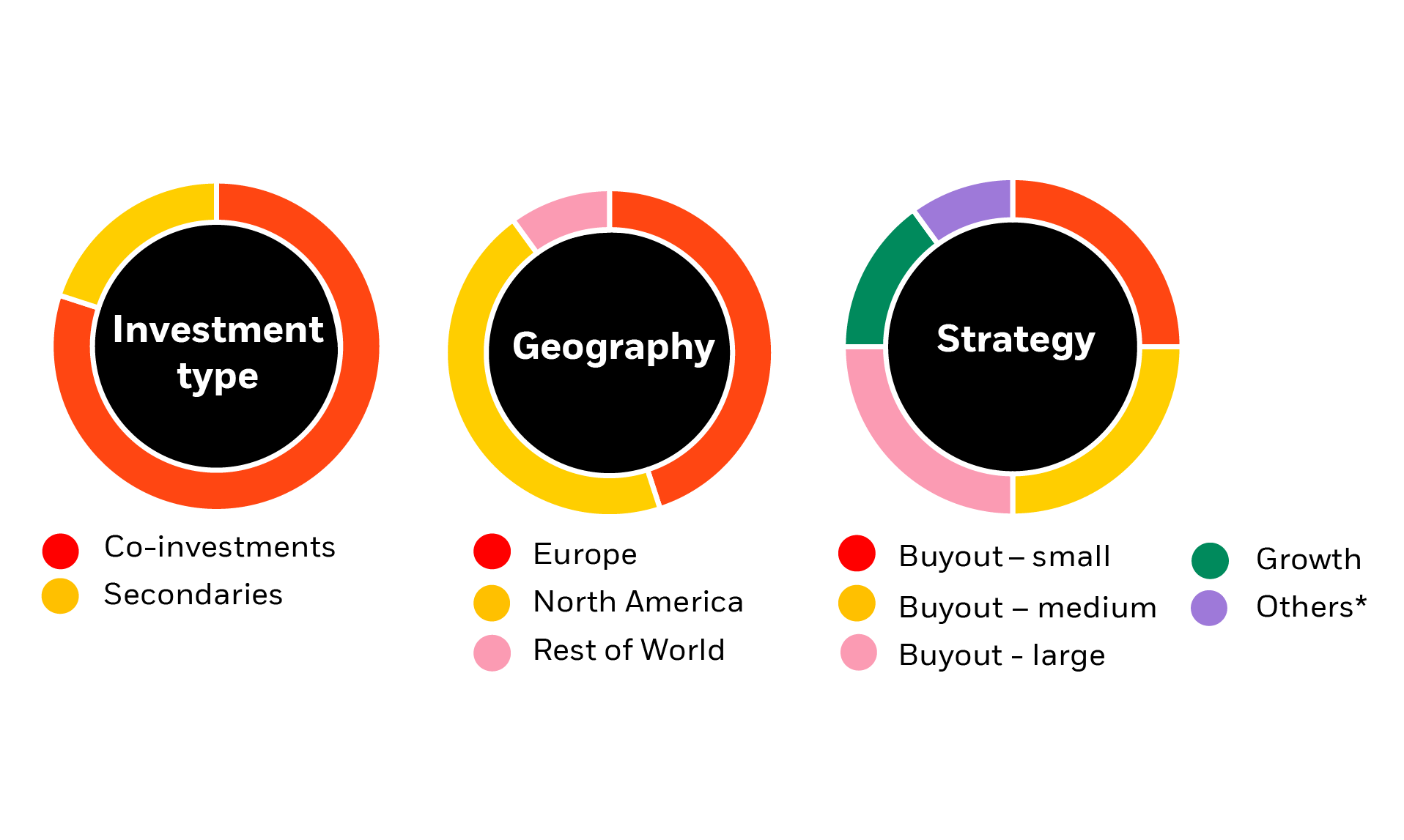
Unlocking private markets for wealth investors
BlackRock has six ELTIF funds, of which two are available as open-ended strategies focused on private equity and multi-alternatives.
Source: BlackRock as of 31st August 2025
Capital at risk. The value of investments and the income from them can fall as well as rise and are not guaranteed. Investors may not get back the amount originally invested.
Accessing private markets with ELTIF
The European Long-Term Investment Fund (ELTIF) is an investment wrapper that allows private market funds to be marketed across the EU with a single passport. The latest update, ELTIF 2.0, offers lower minimum investments and periodic liquidity, as well as additional use cases for wealth managers spanning discretionary, digital, and advisory portfolio management.
Key Takeaways
-
01
Breaking down barriers to entry
ELTIF is the only wrapper that allows scaled adoption of institutional-quality private market investments to be accessible to both professional and non-professional investors in Europe.
-
02
Flexible liquidity
Under the ELTIF 2.0 banner, ELTIFs can now be managed as evergreen, open-ended strategies, allowing for more dynamic portfolio construction and flexible liquidity terms.
-
03
Commercial enabler
ELTIF 2.0 expands the portfolio implementation toolkit and broadens the investment opportunity set available to wealth managers across several distribution channels including advisory, digital and discretionary portfolio management.
Why BlackRock for ELTIF?
Access to BlackRock’s extensive deal flow
Investors in BlackRock ELTIFs can access our institutional-quality private assets, sourced through our robust sourcing pipeline. Our deals are diverse across strategies, sectors and general partners.
Immediate private markets exposure
Investors get immediate exposure to private market assets through an evergreen strategy, allowing for consistent allocation to private markets over time with regular subscriptions and redemptions.
BlackRock’s liquidity management expertise
~20% of our open-ended ELTIFs will be invested in liquid assets like cash, public equities and bonds. This will be managed through our proprietary model, with the aim of minimizing cash drag.
Our ELTIF range
BlackRock Private Equity Fund
The BlackRock Private Equity Fund (BPE) is an innovative, evergreen solution, providing investors with immediate exposure to BlackRock’s private equity investments and deal flow, that are diversified across sectors, strategies, and geographies globally.
The Fund’s strategy is managed by BlackRock Private Equity Partners (PEP), with over 25 years of experience1 in private equity investing across direct co-investments, primaries, and secondaries.
Why Private Equity?
Private equity investors can access a wider range of companies, with 88% of global firms earning over USD$100 million annually being private.2 Moreover, historically, private equity has outperformed public markets3 due to active management, flexible capital deployment, and unique investment opportunities. For example, opportunities in growth sectors such as healthcare, technology, media and communication.
BPE provides access to BlackRock’s global and diversely sourced private equity deals that are filtered by BlackRock’s disciplined deal selection and due diligence process.
- Co-investment deals sourced across GP, BlackRock, Separate account GP, and management team relationships.
- Out of nearly 10,000 opportunities reviewed, only ~4%4 passed our investment selection process and were approved and closed.
Illustrative strategy

1 BlackRock, as of 31st December 2024.
2 Capital IQ, BlackRock as of 30 September 2024.
3 BlackRock, May 2025. Data from March 2019 to September 2024. Private Equity Investments are represented by the Preqin Index.
4 Period from 1 January 2000 to 31 December 2024. Actual number of investment opportunities may vary. Data excludes legacy SRPEP investment opportunities reviewed prior to the closing of BlackRock’s acquisition of SRPEP on 4 September 2012. Count of invested deals reflects unique number of direct co-investments made by PEP & excludes follow-ons.
*Subject to share class

The index performance shown on this slide is not comparable to the Fund and is not representative of the performance that the Fund will achieve and is not a reliable indicator of the returns that any investor will receive. Past performance is not a reliable indicator of current or future results and should not be the sole factor of consideration when selecting a product or strategy. Index returns are for illustrative purposes only. Index performance returns do not reflect any management fees, transaction costs or expenses. indexes are unmanaged and one cannot invest directly in an index. Diversification and asset allocation may not fully protect you from market risk.
BlackRock Multi Alternatives Growth Fund
BlackRock’s flagship Multi Alternatives Fund (MAG) has the flexibility to invest across the full breadth of private markets to deliver capital growth over the long term.
Why Multi-Alternatives?
Each asset class in private markets behaves differently in changing market environments. By investing in a blend of them and leveraging diverse strategies and implementation methods, we aim to reduce complexity and build greater resilience into a single portfolio. The fund provides exposure to BlackRock's mega forces - the major structural changes transforming our world like Digital Disruption and Artificial Intelligence, Energy Transition, and the Future of Finance.
With 750+5 externally invested managers, we have vast connections to sourcing across regions, asset classes and industries.
Illustrative strategy

BlackRock, July 2025. For illustrative purposes only.
5 BlackRock, as of 30 June2025, unless otherwise specified.
6 Redemptions may be temporarily suspended subject to extenuating circumstances specified in the prospectus.
BlackRock closed-ended ELTIFs
BlackRock has also successfully launched several closed-ended ELTIFs, demonstrating our expertise across private markets.
Portfolio deal examples
Project Iris7

Sector: Telecommunications & Financial Services
Strategy: Secondaries
Geography: Europe
Investment highlights include:
1. Leading commercial satellite communications provider servicing diverse clients spanning maritime, energy, enterprise, and government.
2. Prominent independent financial advisor in France, having expanded through strategic acquisitions and organic growth.
3. Robust growth profiles and executable value creation strategies.
Project Opella7

Closing date: 2025
Sector: Healthcare
Sponsor: Clayton, Dubilier & Rice
Strategy: Buyout
Geography: Global
Investment highlights include:
1. Leading global over-the-counter pharmaceutical business with well-established brands.
2. Differentiation from competitors through a science backed product approach.
3. Localised marketing.
7BlackRock, June 2025. Case studies are for illustrative purposes only; they are not meant as a guarantee of any future results or experience and should not be interpreted as advice or a recommendation.
These materials do not constitute an offer to sell, or a solicitation of an offer to sell, securities in any jurisdiction or to any person. Prospective investors should read the full final offering documentation before investing. Subsequent investments will only be valid if made on this basis.









